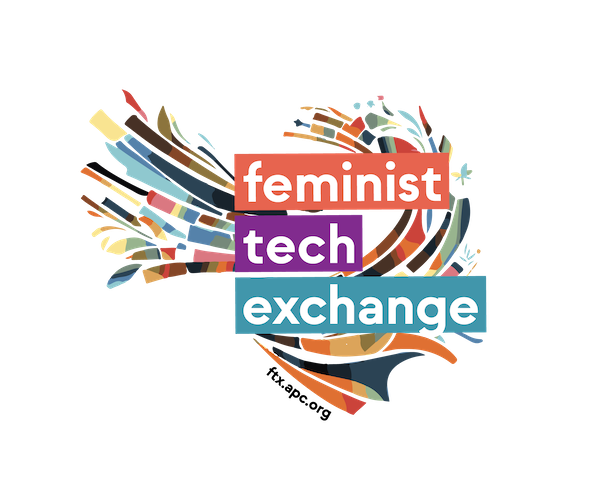
Illustration by Ibrahim Kizza for GenderIT
In April 2024, a Bangladeshi TV series Rupantor (Bangla for “transition” or “transformation”) was banned after repeated backlash and boycott campaigns for allegedly promoting an LGBTQIA+ agenda. The drama centres around a character who experiences alienation and isolation, and withdraws from social life due to a “hormonal imbalance”, which the doctor diagnoses as mentally transitioning into a woman while remaining within the body of a man. The character’s physical and emotional turmoil and inclinations led to viewer accusations of advocating for a “transgender ideology” and LGBTQIA+ rights. The online backlash eventually compelled the production company to remove the drama from its YouTube channel which the director alleged was forced by the corporate sponsor who were facing a boycott campaign for their involvement with the project. Terming it as experimental, he further added that there was nothing in the story that “promoted LGBTQ rights.” The lead actor in the drama, Farhan Ahmed Jovan, faced threats and issued a public assurance that he would not consider any roles disapproved of by the public in the future.
Mainstream approval of queer justice has always been a thorny subject in Bangladesh, even among legacy feminist organisations. Social, cultural, economic positions of hijra communities – one of the only few socially legible gender non-binary groups – can only be described as largely disenfranchised. A limited recognition of “third genders” since 2014 via an official gazette notification has only resulted in provisional gains, and was framed in such a biologically deterministic and dehumanising way that it created more complications and obstructions to their recognition. For someone to be recognised, an official approval process includes degrading medical examinations to prove that they exhibit physically ambiguous traits, not to mention an array of paperwork to get official documents under a new gender identity, which practically means this exclusively applies to hijra and intersex individuals and at a cost of demeaning procedures. All other non-normative gender and sexualities remain outside the purview of state recognition, and the British colonial era section 377 of the 1860 penal code particularly criminalises homosexuality, though it is worth highlighting there is no mention of homosexuality directly in the section with a reference to “carnal intercourse against the order of nature with any man, woman or animal.”
Many activists, nevertheless, grasped for hope and possibility – a small opening in a hostile climate – in the third gender recognition. Especially after the gruesome murder of a community organiser in 2016 and setbacks during COVID-19, there was measured confidence in a revived activism space. Even with extreme backlash, the drama Rupantor was an addition to this hope that put transgender rights in public discourse. This was preceded by another viral episode livestreamed on Facebook, where a university professor is shown tearing up a textbook containing reference to the story of a boy who questions their gender and finds a new family with the hijra community, and thus the name Sharif given at birth, becomes Sharifa afterwards. In response, the then-government removed the story from the textbook. These about-turns were also unfortunately expected – a lack of democratic institutions and social space and muscular appeal to misguided ideas of tradition and culture, be it nationalism or religion or a combination thereof, tend to influence and shape public opinions, and these instances were no different. However, despite clear divisions, attempted provocations, and spiritless capitulations, these fault lines obscure more than they illuminate the questions and complexities surrounding gender justice, particularly queer liberation.
A limited recognition of “third genders” since 2014 via an official gazette notification has only resulted in provisional gains, and was framed in such a biologically deterministic and dehumanising way that it created more complications and obstructions to their recognition.
A familiar script
The online campaigns that transpired into in-person protests, threats, attacks as well as incidents of doxing, have gained traction and appear to be well-coordinated and orchestrated and show no signs of letting up. A rainbow-coloured garment from a lifestyle brand would attract accusations of promoting a queer agenda and online campaigns for boycott; a curriculum reform advisory committee was dissolved after organised online attacks against a university faculty member for being Islamophobic because of her prior Facebook post supporting trans rights and gender equality. Inciteful online posts against trans and queer communities receive much more support while even veiled or feeble posts supportive of their dignity, rights, and self-expression invite threats, and often organised hate campaigns.
Even though non-binary genders were already recognised under a third gender category and have cultural and social visibility albeit conditionally, the recent backlash targeted hijra, intersex, and trans rights with intimidation campaigns leading to the types of aforementioned backtracking. Those leading the hysteria claim that the idea of non-binary gender or non-normative sexualities are against local culture, traditions, and religion, is a western import, and hence any “artificial” gender transformation is against divine will, and anyone interested in such a transformation should be ostracised from society.
These campaigns of intimidation have gained momentum especially after the news of a proposed bill on trans rights became public. Some of them assert that they do not oppose hijra or intersex people who are born a certain way, but those who attempt to change their identities later in life, and those who work to protect rights of trans people would promote homosexuality, a western conspiracy. Ironically the one western import they do not oppose and resolutely appeal to is the colonial era section 377 which criminalised homosexuality by using language like “against the order of nature” that they routinely use in their arguments against justice for trans people.
Leaflets, literature, memes and comments decry a breakdown of social order, and a conspiracy to impose alien western ideas that align with the populist narratives in Bangladesh. The languages and arguments they employ are in sync with worldwide rightwing movements – for example, that inclusion of gender non-conforming people in classrooms or curricula is an attempt to brainwash children, that to teach children about gender diverse communities is indoctrination, that any effort to ensure their dignity and acceptance is akin to opening the doors to sexual assault, a moral panic about the breakdown of traditional heteronormative families and values.
It’s no surprise that there is dissimulation and partiality to public discussions, a historical constant. But this propaganda is not just misinformation, rather there is a deeper sociological phenomenon at play. And not also simply a matter of fake news vs fact, but rooted in ideological motivations. The real challenge isn’t just finding some unvarnished truth, but unwrapping and understanding the political, social, and material foundations of a growing trend.
Many narratives and arguments against queer and trans rights, and to a greater extent against feminism, have been in alignment with the interests and preoccupations of the global alt-right movements and culture wars originating in the west. Of interest in Bangladesh is a cultural affinity towards a sense of “crisis of masculinity”, of Islam, and associated group formations and allegiances, particularly in the emergence of what scholars Sahar Ghumkhor and Hizer Mir call a “Muslim manosphere”, “where debates about gender, race, multiculturalism, and religion have been cast as crises under neoliberal capitalism.”
This propaganda is not just misinformation, rather there is a deeper sociological phenomenon at play. And not also simply a matter of fake news vs fact, but rooted in ideological motivations. The real challenge isn’t just finding some unvarnished truth, but unwrapping and understanding the political, social, and material foundations of a growing trend.
These debates essentially frame feminism, and with that any notion of gender justice as a concern, a foreign ideology, and a “soft weapon,” converging this Muslim manosphere activism “with the Western right as part of a wider ‘red pill’ phenomenon.” Instead of a rift resulting from divergent interests and cultural differences among these communities of men, “the Western preoccupation with ‘sexual democracy,’ gender, sexual emancipation” has unintentionally ended up mobilising and unifying them “against a greater perceived foe: the feminist challenge to traditional masculinity and the wider radical left’s complicity in so-called cultural corrosion.” Ghumkhor and Mir add, “this ‘red pill’ alliance is emerging at the expense of Muslim women, who are relegated to being a cultural menace when they speak or being passive spectators when they do not.”
Despite a counter-positioning against western impositions, “These groups attempt to fight Western hegemony by simply inverting the dichotomy that the West has placed itself in […]. As such, if the West is modern, these groups will affirm their traditionality, and it is this relationship which governs all of their responses to the woman question. [They do not] despite, what they may believe, overthrow [those west-produced] constructs […] Thus, their search for an ‘authentic Islam’ can be reduced to little more than an attempt be non-Western,” while their movements percolate as a derivative of “Eurocentrism".
The other side of the coin
The mainstream feminist movement in Bangladesh has a complicated trajectory, especially since the 1980s. It has often aligned with state-sanctioned legal rights and body politic which saw women mainly as victims without sexual agency. As a result, it has emphasised on individual rights, expansive surveillance mechanism, neoliberal models of empowerment, a disciplinarian understanding of sexual politics, and reliance on biological determinism especially when dealing with non-conforming gender and sexualities. Issues like class, ethnicity, or other forms of marginalisation that women face are recognised, but strategies and visions of empowerment are largely within an assimilationist framework without meaningful emancipatory potential. And so, we get debt-saddled microcredit entrepreneurs, exploited feminised labour of garments industries, individual representations in the ranks of the neoliberal order as success stories.
Disengaged from any collective vision of freedom, there has been an overemphasis on constructing an ahistorical idea of “tradition,” “religion,” “society” as barriers to progress, with progress seen as overcoming these barriers. At the same time, progress is also tied to national upliftment where a person, particularly the subjugated, is subjected to a valuation and respectability test. For example, after the 2013 Rana Plaza disaster, billboards celebrated garment workers for their economic contributions. Women are expected to cast off the shackles of society and join in line for the neoliberal national and individual empowerment project as long as they are in line with the ideals of good citizenry.
In most aspects, mainstream feminism in Bangladesh strives to regulate any perceived deviance from social norms by advocating for carceral interventions and expanding state security apparatuses. For example, despite systematic documentation of police violence against sex workers, increasing police interventions remains a key feminist demand, or that activism against brothel eviction includes arguments that without concentration of sex workers in brothels they would fan out all across society, or increasing brothel security with the installation of security cameras and special IDs for brothel residents. In the same vein, much of trans rights is framed in the language of transforming deviating subjects into productive, regulated citizens who will operate as respectable under the state’s gaze.
Progress is also tied to national upliftment where a person, particularly the subjugated, is subjected to a valuation and respectability test.
Borrowing the term “femonationalism” from Sara Farris, in the same essay Ghumkhor and Mir charts, “its capacity to mobilize Islamophobia,” and how “the nation’s values are in consequence imagined to be defended by protecting Muslim women from the ‘toxic masculinity’ of Muslim men.” In this schema, being modern is contrasted with backward Islam, and feminism a flashpoint between the two. Both femonationalism, including its manifestations in Bangladesh, and the Muslim manosphere and its adherents here, following Ghumkhor and Mir, cite a “crisis of Islam”:
“While both phenomena have different intentions and purposes in invoking a ‘crisis of Islam’ by reference to Muslim women, one to advocate for the preservation of Western culture while other for the preservation of Islamic tradition, they nevertheless share a Eurocentric reading of Islam.”
This feminist trajectory of a blend of nationalist and individual empowerment against an antiquated tradition, ahistorically understood, is guided by donor funding and a complex political economy which prevents alternate avenues of organising, creating a donor-dependent model even when draconian restrictions on foreign funding severely limit inflow of funds. No doubt there is a resource crisis, but more than quantity of funds, it is how fundamentally feminist politics has been transformed by that influence. As anthropologist Lamia Karim notes in “NGOs, Neoliberalism, and Women in Bangladesh”, “The question of how power relations shaped women’s lives was restricted to a narrow analysis of rural patriarchy with scant attention to how NGOs themselves appropriated existing gender roles and power relations to exercise their will over their female members.” Accession to the terms of this capitalist empowerment remains a central feminist goal and aspiration in Bangladesh. The NGO and capitalist development models have so influenced and limited the opportunities and avenues for equality and equity that any demands for justice, including trans rights, retread the same paths.
Whither trans rights?
Recent developments have forced trans rights activists into a defensive position and back into prioritising immediate physical safety and mental wellbeing. But regardless, finding a home within and along with established feminist movements is an intricate exercise because of prevailing trans-exclusionary sentiments even in those spaces. And when activists are welcome or when trans or hijra activists chart a path themselves, it is following a similar script of empowerment, representation, and inclusion described above, which is a bargain with the disciplinarian, surveillance-heavy biopolitical apparatus interested in regulating the limits and acceptability of gender, desire, and sexuality.
Finding a home within and along with established feminist movements is an intricate exercise because of prevailing trans-exclusionary sentiments even in those spaces.
Institutional acknowledgement and arrangements – e.g., by the state, in families, places of employment and education – of gender and sexual nonconformity have always been fraught. Besides section 377, the British colonial Criminal Tribes Act 1871 classified entire communities of people as “habitual criminals” and created a derogatory category, “eunuchs,” to criminalise many localised gender and sexual practices under a reductive, catchall umbrella, where these statutes were instrumental to the “importation of British heteronormative ideas to South Asia.”
It’s not a stretch to conclude that forces of religious and nationalist reaction have taken up the mantle of policing gender and sexual boundaries, reinforcing a colonial legacy while they bemoan western influence. On the other hand, the inheritance of such spurious categorisation and pseudoscience is much more widespread even among purported allies and within the community itself. Echoes of biological determinism and faulty “science” pervade, as the Rupantor example illustrated with “hormonal imbalance” and medical diagnosis as an explanatory framework.
And it’s not only in fiction. Although legal recognition of hijra people as third gender opened up organising possibilities and greater visibility, part of the recognition is dehumanising medical examinations, several steps of approvals, increased surveillance. In addition, sociologist Adnan Hossain, states, “concealed in the process of legal recognition is a new discursive interpellation of the hijra as ‘disabled,’” adding that, “hijra are understood to be a special group of people with genital defects delinked from sexual desire.”
Mapping neat categories of gender and sexual classifications onto lived and fluid identities which are formed through desire, social subjectivities, historical and cultural contingencies, and by default messy, are never easy. Moreover, the cross-appellation of current and globally available terms and historically specific transgressive South Asian (including Bangladesh) gender identities and sexual practices further complicate the matter. Harder still is vying for recognition and rights within the constricted zone of extractive empowerment and medico-legal conditional rights against an onslaught of intensifying hate campaigns.
There is still hope that with a democratic transition, the clarion call of anti-discrimination which toppled the previous autocratic regime, will not become yet another empty slogan and extend to all marginalised groups. What remains just as important is to create and sustain possibilities for self-determination beyond capitalist exploitation, state and social surveillance, limits of medico-legal solutions and with consideration to the ever-evolving historical, cultural, political dimensions to gender, desire, and sexuality.
- 154 views






Add new comment